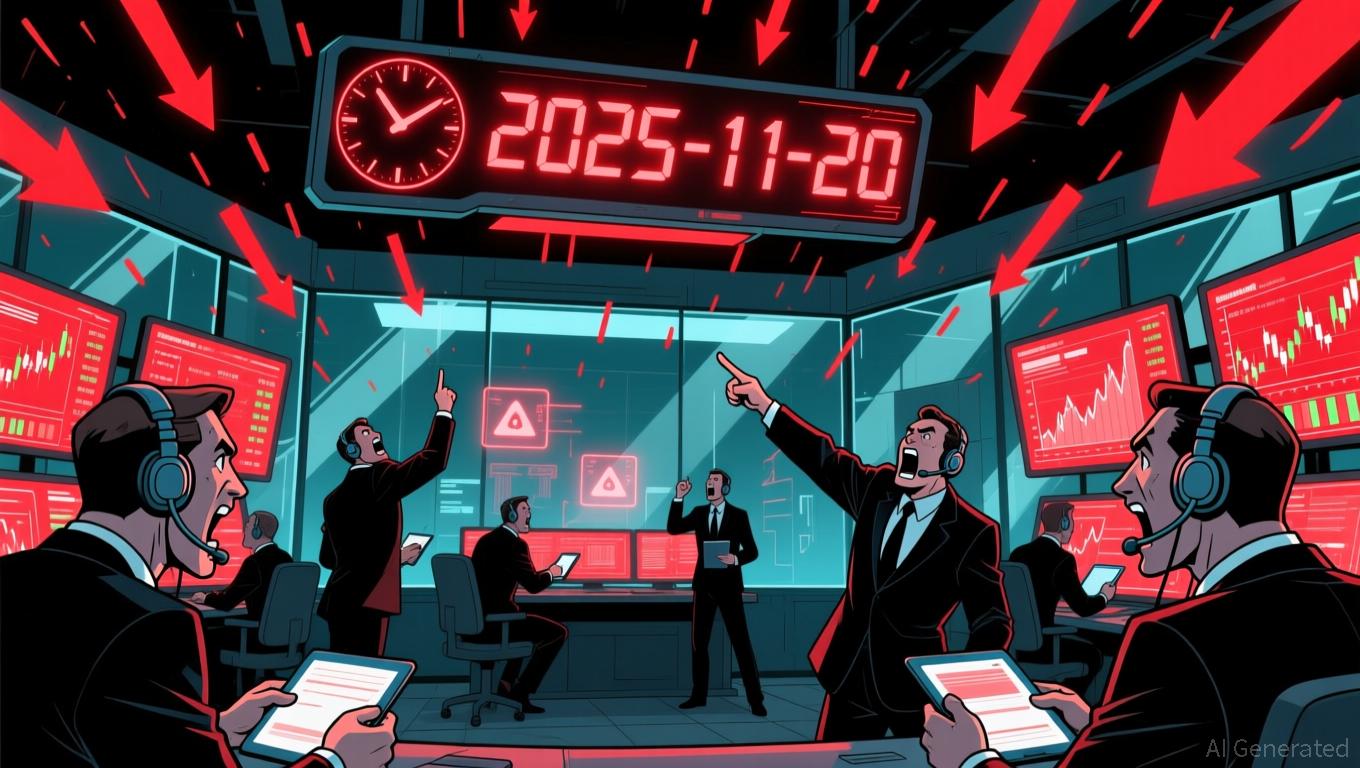Vitalik Buterin Backs ZKsync: Strategic Impact on Ethereum Layer-2 Landscape and Future Value
- Vitalik Buterin's endorsement of ZKsync's Atlas upgrade boosts ZKsync's profile as a key Ethereum scaling solution. - The upgrade enables 15,000 TPS with near-instant finality, reducing gas fees by 90% and attracting $15B in institutional inflows. - ZKsync's ZK-rollup technology outperforms Optimism/Arbitrum with faster finality, lower fees, and EVM compatibility for seamless app migration. - Ethereum's 2025 roadmap prioritizes ZK-based scaling, aligning with Deutsche Bank's adoption of ZKsync for compli
ZKsync's Atlas Upgrade: Driving Scalability and Liquidity
Launched in 2025, the Atlas upgrade represents a major advancement for ZKsync. With the ability to process more than 15,000 transactions per second (TPS) and deliver nearly instant finality, this upgrade
Buterin’s support has boosted ZKsync’s profile,
Comparative Advantages: ZKsync vs.
Optimism
and Arbitrum
Although ZKsync, Optimism, and
In contrast, Arbitrum and Optimism utilize optimistic rollups, which presume transaction validity unless disputed. While this approach enables high throughput—
Institutional Adoption and Ethereum's Roadmap
Buterin’s backing has accelerated the institutional embrace of ZK-based scaling.
Ethereum’s future vision is closely tied to ZK-based scaling. The network’s evolution toward a modular structure—where rollups manage execution and Ethereum focuses on data availability and consensus—has become a reality
Strategic Implications for Ethereum's Value
ZK-based scaling is more than a technical enhancement—it is essential for Ethereum’s sustained value. By supporting thousands of rollups and specialized Layer 3s, Ethereum is transforming into a “data availability layer” that underpins a wide array of modular systems
Additionally, ZKsync’s achievements underscore the necessity of ongoing innovation for Ethereum to maintain its lead. While Optimism and Arbitrum currently hold the largest TVL, ZKsync’s emphasis on privacy, speed, and robust infrastructure for institutions positions it as a major contender in Ethereum’s next chapter.
Conclusion: A New Era for Ethereum
Vitalik Buterin’s support for ZKsync is more than just approval—it marks a clear direction for Ethereum’s future. The Atlas upgrade has proven the effectiveness of ZK-rollups in solving scalability and liquidity issues, and Buterin’s influence has hastened institutional involvement. As Ethereum’s roadmap progresses, ZK-based scaling will be central to keeping the network competitive in the fast-changing blockchain world. For investors, the intersection of technical progress, institutional interest, and regulatory compatibility makes ZKsync a standout example of the future of decentralized infrastructure.
Disclaimer: The content of this article solely reflects the author's opinion and does not represent the platform in any capacity. This article is not intended to serve as a reference for making investment decisions.
You may also like
Bitcoin Updates: Institutional Investors Continue Buying Bitcoin Despite Market Sell-Off in Stocks and Cryptocurrencies
- U.S. stocks closed lower Thursday as macroeconomic fears and Fed policy uncertainty drove Nasdaq over 2% down, with Bitcoin hitting $86,100. - Abu Dhabi's ADIC nearly tripled its stake in BlackRock's Bitcoin ETF to $520 million, signaling institutional confidence amid crypto volatility. - CME FedWatch reduced December rate cut odds to 43.8%, while Bitcoin ETFs saw $75M inflows on Nov. 19 despite broader crypto selloffs. - Institutional caution persists as ETF outflows and whale selling tighten liquidity,

Bitcoin News Update: Waning Expectations for Rate Cuts and Massive Bitcoin ETF Outflows Trigger Sharp Stock Decline
- U.S. stocks fell sharply on Thursday, with the Nasdaq Composite dropping over 2% amid fading Fed rate-cut hopes and Bitcoin ETF redemptions. - Bitcoin prices dipped to $86,100 as BlackRock's IBIT ETF recorded a $523M outflow, marking its worst redemption since January 2024. - Institutional investors added $5.7M in Bitcoin short positions, while FedWatch data cut December rate-cut odds to 46% from 93.7% a month ago. - U.S. spot Bitcoin ETFs face $3B in November outflows, with analysts noting a shift from

Fed Navigates Uncertainty as Data Gaps Obscure Rate-Cut Decision
- U.S. Treasury Secretary Bessent urges Fed to continue rate cuts to support growth amid volatile markets and weak labor data. - Delayed September jobs report and 183% October layoff surge cloud Fed's December decision amid inflation concerns. - Market expectations for a 25-basis-point cut dropped to 42.9% as Fed officials split between hawkish caution and dovish relief calls. - Strong Nvidia earnings temporarily eased AI bubble fears but analysts warn of limited capital budgets amid macro risks. - Global

Zcash Halving Event: Driving Value Growth and Prompting Miner Adjustments
- Zcash's 2028 halving will cut block rewards to 0.78125 ZEC, reinforcing its deflationary model and potentially boosting investor demand. - Historical data shows 500% price surges post-halving (2020) and $589 peak in 2025, with Grayscale managing $137M in Zcash assets. - Miners transitioned to PoS post-2024 halving; ECC's 2025 roadmap prioritizes privacy upgrades and institutional adoption via Ztarknet and NU6.1. - Risks include regulatory scrutiny of shielded transactions and volatility, but decentralize